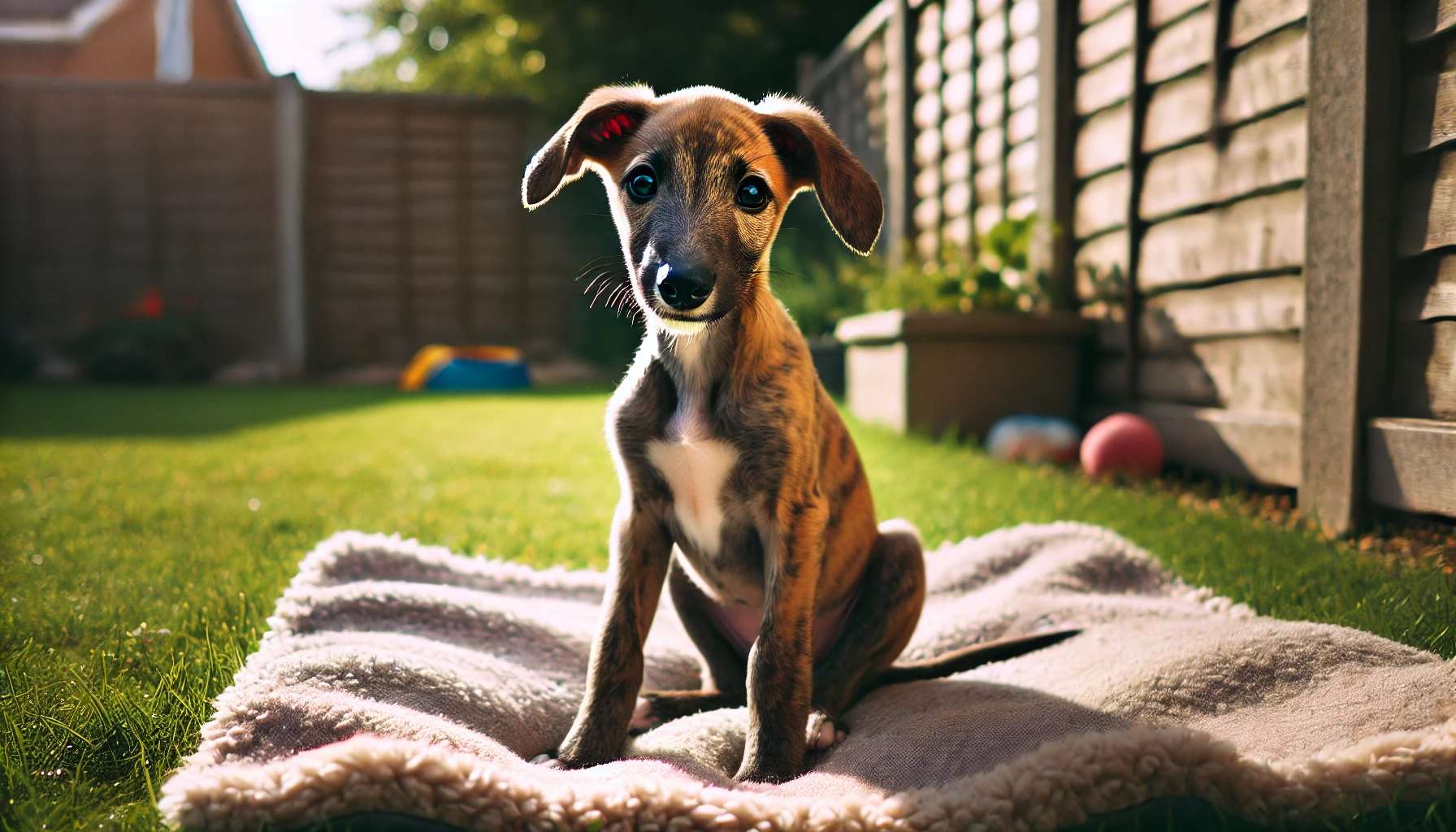PETS
Greyhound Puppy: A Gentle and Graceful Companion

Among dog lovers, few breeds evoke the same admiration for both speed and serenity as the greyhound. While their reputation as record-breaking racers precedes them, the lesser-known truth is that a greyhound puppy is one of the gentlest and most affectionate companions you could bring into your home.
From their ancient origins to modern living room couches, greyhounds have evolved into affectionate family pets, and their puppies are an irresistible blend of curiosity, elegance, and charm. In this comprehensive guide, we’ll explore everything you need to know about raising a greyhound puppy, including care, training, temperament, and health.
A Brief History of the Greyhound
Greyhounds are one of the oldest dog breeds, with depictions found in ancient Egyptian tombs. Originally bred for hunting and coursing due to their sharp vision and unmatched speed, they later became icons of nobility and racing sport. Modern greyhounds are now celebrated not just for their athletic prowess but for their calm demeanor and loving nature—traits that begin to shine even as a greyhound puppy.
What to Expect from a Greyhound Puppy
Appearance
Greyhound puppies have long legs, deep chests, and a sleek body even in early stages. Their coats are short, smooth, and come in a wide variety of colors, including brindle, fawn, blue, black, and white.
-
Weight: Typically 8–15 pounds at 8 weeks
-
Height: 10–14 inches at the shoulder initially, growing rapidly
-
Coat: Fine and short; requires minimal grooming
As they mature, these lean and muscular pups quickly develop the graceful build the breed is known for.
Temperament
Despite being bred for speed, greyhound puppies are surprisingly calm, even laid-back. They’re known for forming strong bonds with their human families and are often described as “Velcro dogs” because they love to stick close.
Traits include:
-
Affectionate and loyal
-
Mild-mannered and quiet
-
Smart but sensitive
-
Playful, especially with short bursts of energy
However, early socialization is essential. Introducing them to new people, pets, and environments will shape a well-rounded adult dog.
Training Your Greyhound Puppy
Training a greyhound puppy is usually straightforward due to their intelligence and eagerness to please. However, their gentle temperament means they respond best to positive reinforcement methods—harsh discipline can break their spirit or cause anxiety.
House Training Tips
-
Use a consistent routine for feeding and bathroom breaks.
-
Crate training is highly effective for this breed.
-
Offer praise and treats immediately after outdoor success.
Basic Commands
Start with sit, stay, and come. Greyhounds are observant and pick up on routine quickly, but they may have moments of stubborn independence. Keeping sessions short and fun helps maintain their focus.
Exercise Needs
Many people assume that greyhounds need intense physical activity due to their racing history. In truth, while a greyhound puppy loves to run, they also love to nap. Known affectionately as “45-mph couch potatoes,” they thrive on short bursts of play followed by long periods of rest.
Ideal exercise for greyhound puppies:
-
Short walks several times a day
-
Brief sprints in a secure fenced area
-
Light fetch or tug-of-war games
-
Mental stimulation through toys and puzzles
Avoid overly strenuous activities during early growth periods to protect their joints and developing bones.
Grooming and Coat Care
One of the perks of having a greyhound puppy is low-maintenance grooming. Their short coats don’t trap much dirt and shed minimally.
Basic grooming routine:
-
Brush once or twice a week with a soft-bristle brush
-
Bathe only when needed—every 2 to 3 months is often enough
-
Trim nails every 2–3 weeks
-
Clean ears weekly to avoid infection
-
Brush teeth 2–3 times per week
Their skin is sensitive, so always use dog-friendly, gentle products.
Feeding a Greyhound Puppy
Proper nutrition is crucial during the puppy stage to support rapid growth. Look for high-quality puppy food that contains:
-
Protein-rich ingredients (chicken, fish, lamb)
-
Healthy fats (omega-3s for coat and brain health)
-
Calcium and phosphorus for bone development
-
Avoid fillers and byproducts
Feed them 3–4 small meals a day until they’re about 6 months old, then transition to 2 meals per day.
Health Concerns and Lifespan
While generally a healthy breed, greyhound puppies can inherit or develop specific conditions, especially if not purchased from a reputable breeder.
Common concerns include:
-
Bloat (Gastric torsion) – Always feed smaller meals and avoid vigorous activity after eating.
-
Hip Dysplasia – Screened breeding reduces risk.
-
Hypothyroidism – Easily managed with medication if diagnosed.
-
Anesthesia Sensitivity – Due to low body fat; vets should be informed.
With proper care, greyhounds live 12 to 15 years, often with few major issues.
Adopting a Greyhound Puppy
While retired racing greyhounds are common in rescues, purebred greyhound puppies are usually found through breeders. If adopting, verify that the rescue provides age-appropriate medical care and socialization. For breeders, ensure they are reputable and can provide health certifications for the parents.
Red flags to avoid:
-
Overbreeding or lack of pedigree documentation
-
Puppies separated from mom too early
-
No vet records or vaccinations
Always meet the puppy and, if possible, their parents in person before committing.
Greyhound Puppies and Children
Greyhounds are incredibly gentle and tolerant, making them excellent companions for families. However, supervision is always advised, especially with younger children who may not yet understand gentle handling.
Teach children to:
-
Approach slowly and calmly
-
Avoid pulling ears or tails
-
Let the dog eat or sleep without interruption
Mutual respect fosters a strong bond between your greyhound puppy and your kids.
Travel and Crate Training
Greyhounds love comfort and security. Crate training helps with housebreaking, travel, and providing a safe space for rest.
Choose a crate that allows your puppy to stand, turn, and lie down comfortably. Soft bedding and a favorite toy can ease crate anxiety.
If traveling, always secure the crate and ensure your greyhound feels safe during the trip.
Also read: Mini Labradoodle: The Perfect Family Companion
Conclusion
The greyhound puppy is an ideal blend of elegance, intelligence, and affection. Despite their speedy reputation, they make relaxed and loyal companions who love curling up beside you after a quick play session.
Whether you live in a city apartment or a countryside home, this graceful breed adapts well to most lifestyles. With proper training, nutrition, and love, a greyhound puppy grows into a lifelong friend and gentle soul who brings endless joy to your family.
FAQs
Are greyhound puppies good for first-time dog owners?
Yes, they are calm, intelligent, and generally easy to train—ideal for beginners.
How fast can a greyhound puppy run?
As puppies, their speed is developing, but adult greyhounds can reach up to 45 mph!
Do greyhound puppies bark a lot?
Not typically. They are a quiet breed and rarely bark unless excited or alerting.
Are greyhounds hypoallergenic?
No, but they shed very little and produce less dander than many other breeds.
How much does a greyhound puppy cost?
From a reputable breeder, they can cost between $800–$1,500 depending on lineage.

-

 EDUCATION3 months ago
EDUCATION3 months agoFree Cover Letter Generator: Build Job-Winning Letters in Minutes
-

 GUIDE3 months ago
GUIDE3 months agoBenefits of Online Personal Training for Fitness Success
-

 BUSINESS3 months ago
BUSINESS3 months agoGrow Your Audience with USA Instagram Followers
-

 TECH3 months ago
TECH3 months agoFreedom Forever Solar Reviews Explain How Conversational Intelligence Turns Customer Interactions into Insights